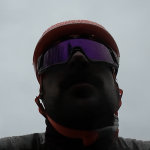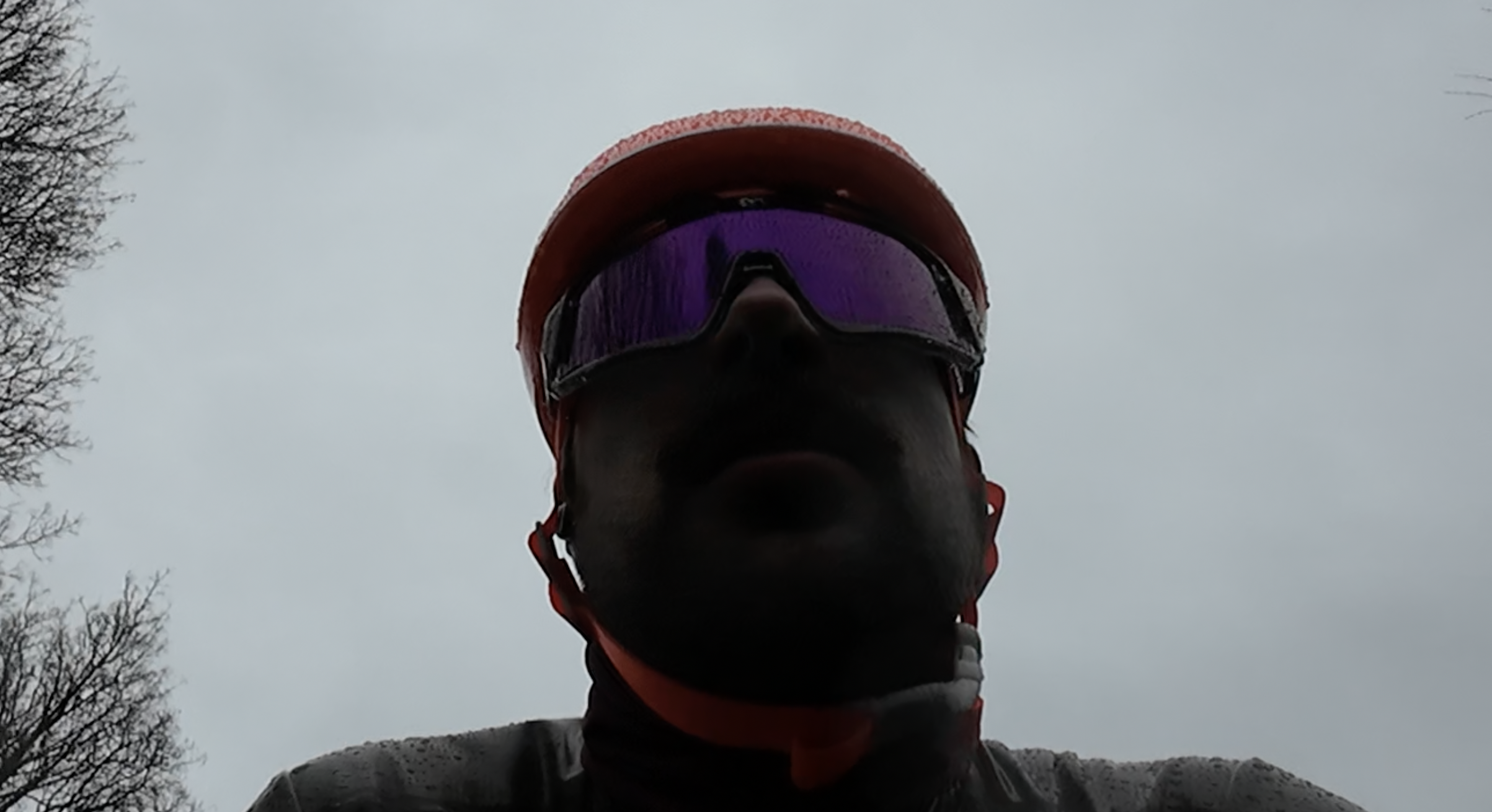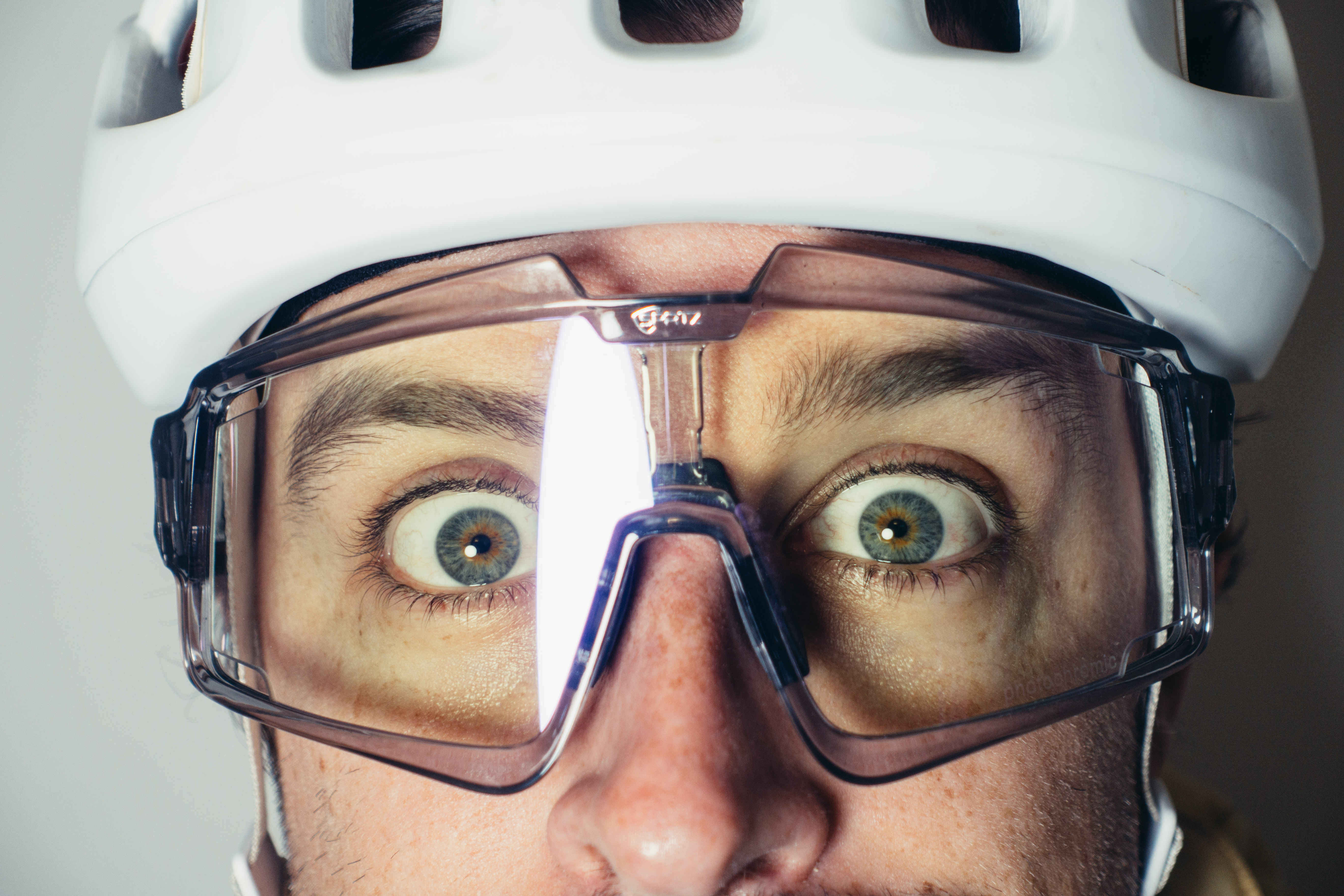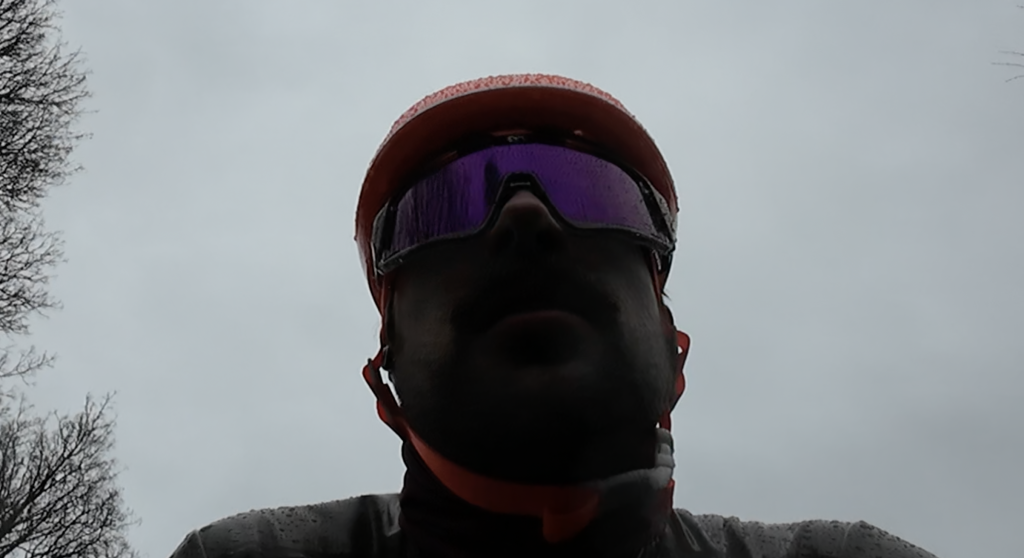I’ve tried pretty much all the best cycling glasses on the market at this point. Winter is obviously a down time for cycling eyewear testing, and I tend to just throw a set of clear lenses in something and go from there. The 100% S3 is usually my favorite, but I recently tested Spatz’s Shield and it certainly gave me more food for thought for winter testing.
The Shield is Spatz’s first foray into the world of cycling eyewear, and the brand has half done it. They are massive and sturdy, but unlike most high-end glasses which usually come with just a clear lens or no replacement at all, they come with a photochromic option to complement the main sun lens.
Usually photochromics don’t do it for me; I find they can’t react fast enough to rapid changes in light, and in direct sunlight they can’t compete with a dedicated solar lens. We tested the Shield, but it really performed well in overcast conditions, making it a great option for spring and fall rides.
Design and aesthetics
The Shield is up there with the largest of all the cycling glasses I’ve tested. It’s not as massive as POC Devour, but it’s not far off. The frames, available only in transparent gray, are thick and angular, and the hinges are also much thicker than anything else. It’s not so much the height that makes them look tall, but also the width. The POC Aspire is a very wide set of glasses, but the Shield is an inch wider. The width is such that the arms should bend inward 1cm on each arm to reduce the width at head level.
The main lens offers a blue base tint with an iridescent red outer coating to reduce light transmission, but in the box you also get a photochromic lens. This one has a slight purple tint, which in very low light is reminiscent of my blue light blocking reading glasses and makes things warmer, unlike the blue cast of the main lens. You can also purchase blue lenses, clear lenses, and a prescription lens insert if you need vision correction.
Both lenses are vented, with a decent-sized cutout at each corner, and although the edge of the frame is thick, rising slightly towards the middle, the center has a cutout that I assume is intended to encourage the ventilation if the frame is flush. the edge of your helmet.
The arm clips are pretty decent, but not the tackiest. The arms fit the head well and do not have ear hooks as is becoming the norm. The nosepiece can be exchanged and two sizes are available ready for use. As will become relevant later, the nose itself is also deeper than most.
So, mega big lens, decent aesthetics, spare parts in the box. Everything looks good so far, and straight out of the modern cycling eyewear playbook. Are they good while riding?
The main objective is fine. It’s pretty good in direct sunlight and performs well in low light, but it’s certainly not going to bother the big players like POC Clarity lenses or the Oakley Prizm line in terms of performance. Photochromic lenses are great though, and from my point of view you should probably consider them as a set of photochromic glasses. Besides, changing the lens is quite simple. Sturdy frames don’t make it any easier, but the lenses just pop out. One thing to consider is that if you’re pushing the goggles back onto your face or into your helmet vents, it’s best to push the frames in, because you can push one side of the lens out if you push it.
The photochromic lens is excellent, however. The purple tint goes some way to making things a little warmer, but more than that, it seems to increase contrast slightly, something that “simple” photochromics often lack. In low light, this is an advantage. The lenses get surprisingly dark even under heavy clouds, but I only really noticed this when looking at photos; at the time, I actually thought they were still mostly clear.
The size of the Shield glasses lends itself well to winter use: more coverage means less rain hitting your face. What the pictures don’t show you is that they are actually noticeably further away from your face than most other cycling glasses, and therefore there is significant airflow behind them. It’s not enough to become annoying as is the case with the Oakley Kato, but it does mean that they resist fogging very well.
It’s actually like looking at the world through a windshield. The little extra distance means you feel like you’re looking through a glass window, rather than just staring, but as always with the qualms I have with decent glasses, it’s really only when I focus on them .
I don’t have a massive head, but I often found that the shield started to get clogged on the forehead of my helmet. I couldn’t wear these with the Trek Ballista at all, so if you’re a small-headed person, I would suggest these aren’t for you. This bounce of the brows, coupled with the fact that the nose isn’t that squishy, means I experienced some discomfort at the bridge of the nose after moderate driving times.
The photochromic lens has a blue-violet coating which helps increase contrast on overcast days. Value
In the context of modern cycling glasses, the Spatz Shield’s MSRP (£164.99 or around $207) is very reasonable. This is the high end of the mid-range, and for that you get a lot of stuff in the box and build quality that is among the best on the market.
Given the versatility offered by the combination of the solar lens and a decent photochromic, you’re pretty much covered for all eventualities, so I think these represent decent value.
The main lens is fine, but the photochromic option is really the star of the show. Verdict
If you want a set of photochromic cycling glasses, these are about as good as you’re likely to find. They are not as good in the sun as the others, and their size does start to present some disadvantages, but for a first foray they are excellent, especially in winter.
I failed to recommend these as the best cycling glasses for winter, as I tended to reach for my 100% S3 with a clear lens, which sat closer to my eyes, felt more protective and more comfortable too, but it was a close race thing.
Technical specifications: 100% S3 sunglasses
- Price: £164.99/Approx. $207
- Weight: 44.6 g (real)
- Color/lens options: 4 (Red, Blue, Transparent, Photochromic)





